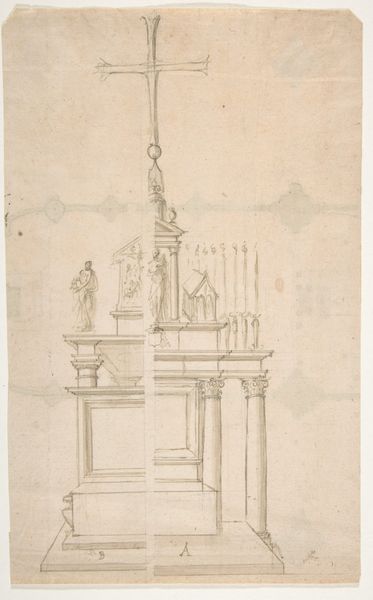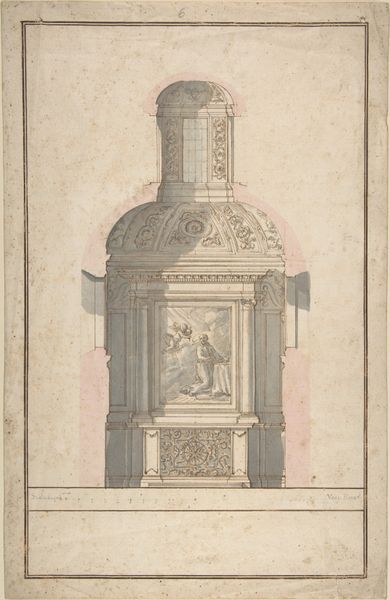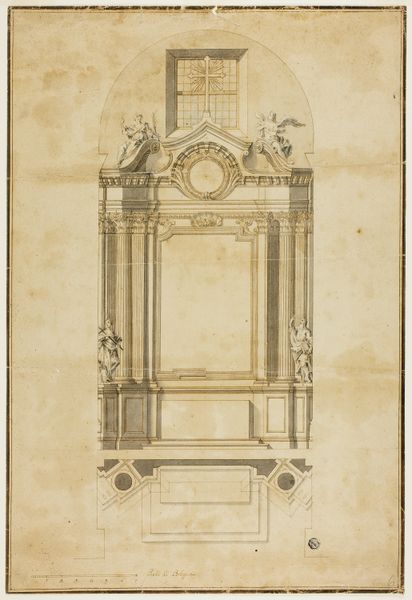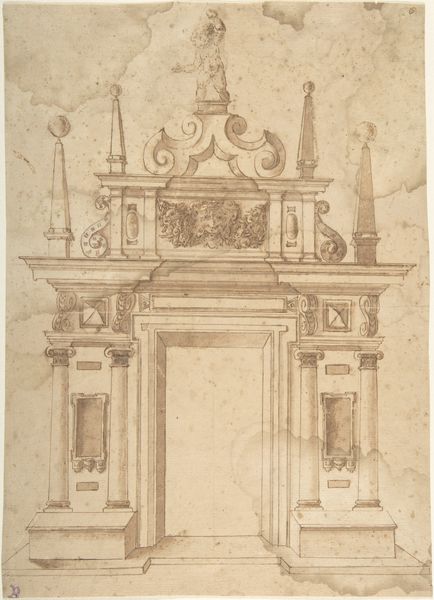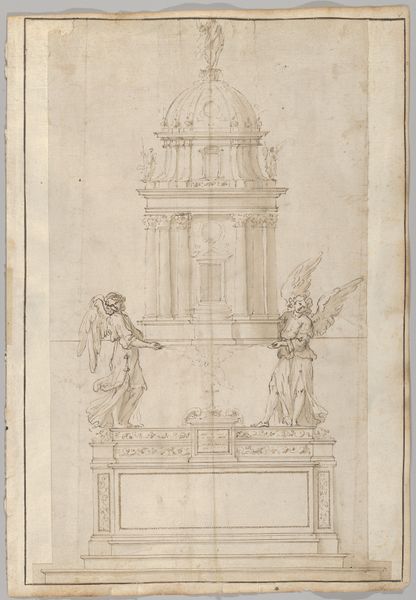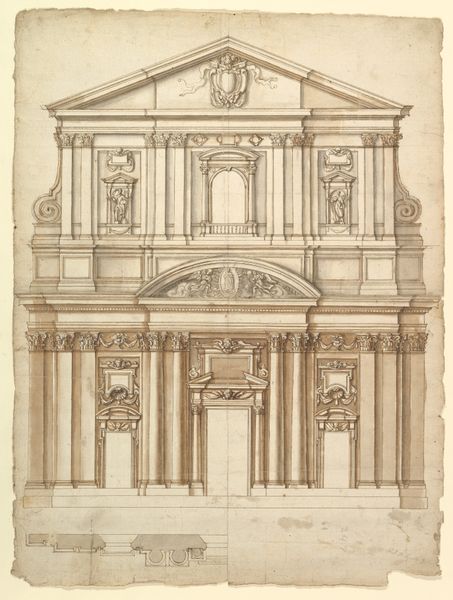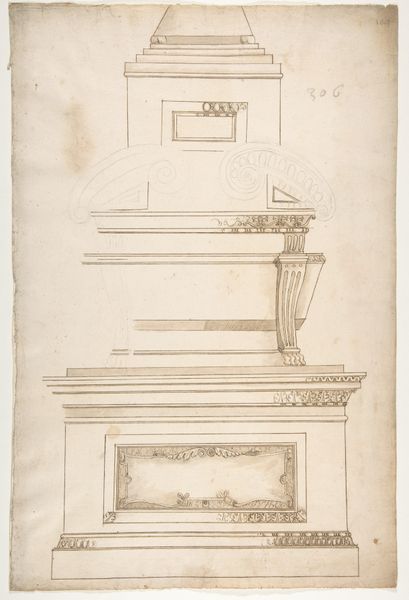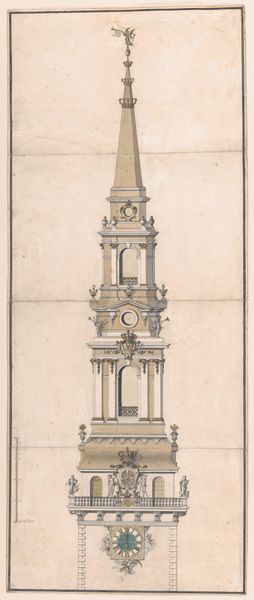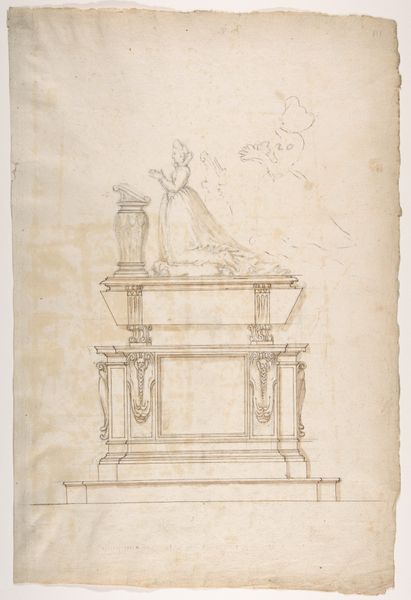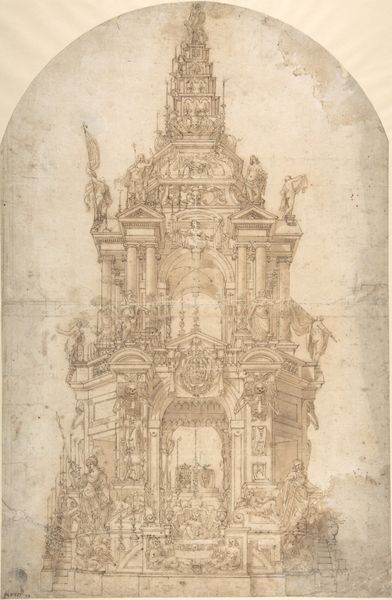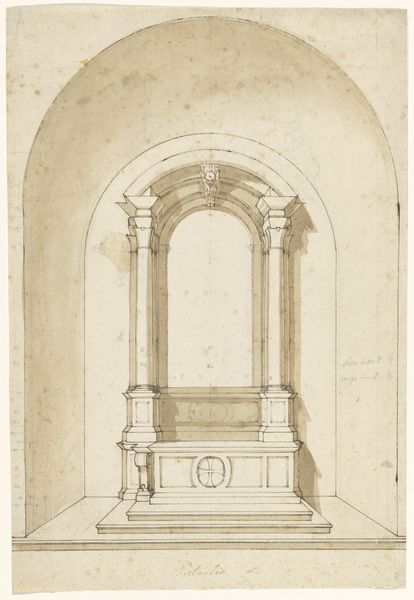
Design for an Polygonal Tabernacle, with Obelisks and a Pediment Surmounted by Three Figures Supporting a Tempietto-like Structure 1512 - 1572
0:00
0:00
drawing, print, pencil, architecture
#
drawing
# print
#
form
#
11_renaissance
#
coloured pencil
#
geometric
#
pencil
#
line
#
italian-renaissance
#
architecture
Dimensions: Sheet: 15 5/16 x 10 9/16 in. (38.9 x 26.9 cm)
Copyright: Public Domain
Curator: Let's spend some time with this drawing entitled "Design for a Polygonal Tabernacle, with Obelisks and a Pediment Surmounted by Three Figures Supporting a Tempietto-like Structure" by Galeazzo Alessi, dating from between 1512 and 1572. Editor: Immediately, I’m struck by the ethereal quality. It’s as if the architectural drawing itself is a fleeting dream, the ink barely clinging to the page, a ghostly monument in waiting. Curator: Right. This is a medium where Alessi masterfully utilizes the interplay between line, pencil and colored pencil work. It gives us insight into not just the final vision, but the labor of its potential realization, and of course, its place in a very particular historical and social framework of the Italian Renaissance. Editor: I see a miniature city—an ideal, elevated and enshrined, though rendered with the simple hand of geometric form. Each layer stacked meticulously upon the other, creating a pagoda effect almost, a reaching for the heavens with something beautiful to behold. Curator: Exactly. The layering reflects not just an aesthetic choice, but also the practical concerns around realizing monumental architecture. We're seeing both design and also implicit instructions concerning craft. The materiality of marble, for example, as it shifts from raw state to classical form... Editor: It makes you wonder, though, if the real achievement here is in the *idea* of the tabernacle, its perfect lines, and balanced volumes. A materialist might examine social forces, and that’s certainly vital. I look at this piece as an act of devotion, perhaps as vital as the end product ever could be. Curator: True. By emphasizing geometrical precision alongside imagined physical labor, Alessi highlights the central importance of careful planning during construction. In its essence, the work bridges abstract artistic inspiration and grounded physical considerations. Editor: The act of building here feels very deliberate, each precisely rendered section conveying careful, painstaking preparation… You just want to inhabit the structure and dwell on such precise, geometrical intentions! It feels a kind of meditation itself. Curator: Reflecting on our discussion, it's quite remarkable to consider the amount of craftsmanship involved here. Editor: Yes. This piece leaves me with the idea that drawing is a powerful means to realize a potential and emotional monument to form.
Comments
No comments
Be the first to comment and join the conversation on the ultimate creative platform.

